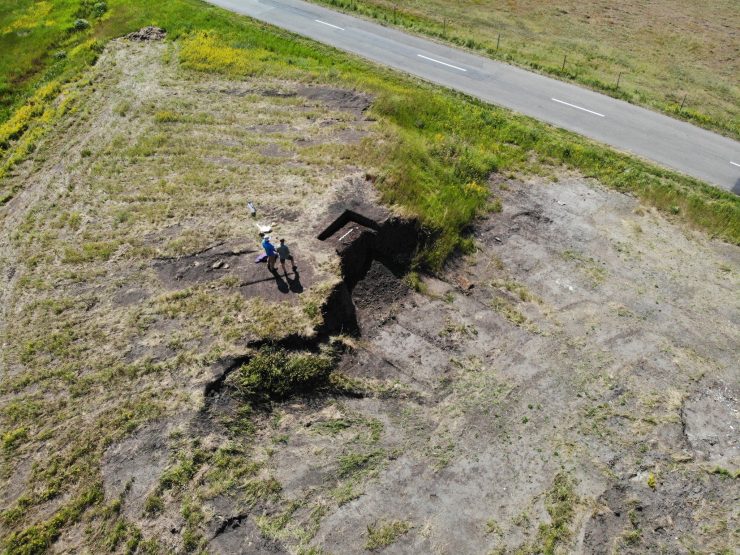Pecica is a town in Arad County, Romania. In ancient times it was a Dacian fortress called Ziridava and today it is an important archeological site. Using magnetometric data, Arad archaeologists investigated a mound close to the village of Pecica and found human bones that might be 5,000 years old.
The Arad Museum Complex started studying the Pecica area in March, and the discoveries are not long in coming. The Arad Museum reported that non-intrusive methods, including as magnetometric measurements, were used to conduct archeological study on a tumulus between the towns of Turnu and Variasu Mic.
During the work, materials are collected from ground level to help establish a chronology of archaeological sites, using aerial photography, magnetometric scans and other modern technologies. (ceramic pieces, stone tools, etc.)
“They were at a shallow depth, about 45 centimeters from the highest point of the mound. Following the excavation, it was found that the bones were part of a tomb in which the deceased was placed on his back, with crouched legs. The tomb was excavated in the mantle of the mound, this practice of reusing burial mounds having been encountered over several epochs. In the absence of a funerary inventory, chronological assessments can be made only on the basis of the position of the deceased, which in this case is typical for the chronological horizon of the early Bronze Age, about 3000 – 2500 BC,” informed the representatives of the Arad Museum Complex.
According to the news of the Romaninan National News Agency Agerpres Since the region is valued by archaeologists, more in-depth investigation is being done as part of a project dubbed “ArheoPecica,” through which already known sites are being reevaluated. We look forward to other results to come.
Another major objective of the ArheoPecica project is to evaluate a large field of burial mounds, located in the northeastern part of the administrative-territorial unit of Pecica.
